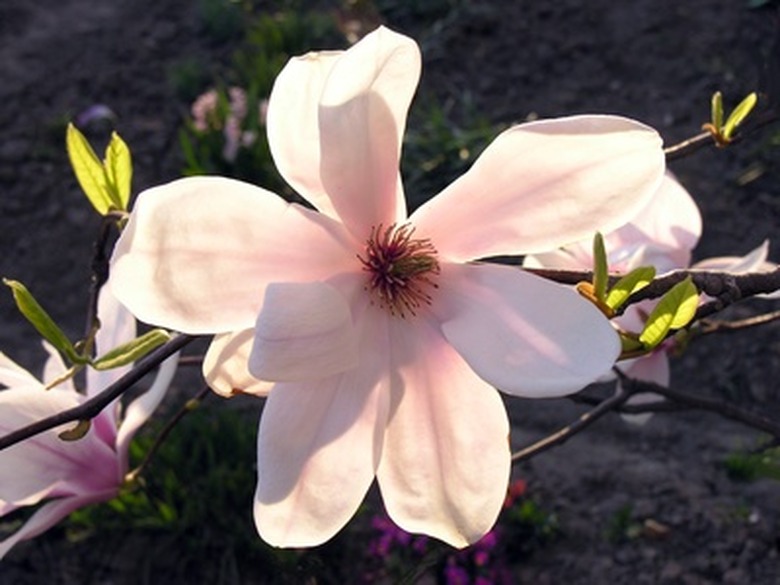Louisiana Plant Identification
Louisiana plants display considerable diversity. While relatively low-lying, Louisiana land accommodates several kinds of plains, prairie areas and hilly pine slopes. Growing zones 8 and 9 give Louisiana mild winters (in southern parts of the state, winter temperatures never reach freezing). Brackish delta waters, where the Mississippi River meets the Gulf, encourage a wide variety of marsh grasses. A wide variety of trees, vines and ferns are among native listings.
Trees
A photo tour of the Louisiana State University School of Renewable Resources website reveals the wide diversity of trees and their habitats. From bald cypress to hardwoods like oak, pecan, maple and ash, trees contribute to a variety of small ecosystems, from marshy swamp to upland forests. Many of Louisiana's native trees are bloomers, including dogwood, magnolia, tulip and fringe.
- Louisiana plants display considerable diversity.
- From bald cypress to hardwoods like oak, pecan, maple and ash, trees contribute to a variety of small ecosystems, from marshy swamp to upland forests.
Shrubs
Some of the azaleas, like the pinkster variety, are specific to hardiness zones 8 and 9 and more fragile at lower temperatures. Yaupon, chinquapin, Carolina rose, wild hydrangea and dwarf palmetto are among regional varieties that do well in the wild. Plant Native's list for Louisiana includes Arkansas, Eastern Oklahoma and Eastern Texas.
Flowering Perennials
Experienced gardeners will find it easier to determine the few flowering perennials that do not flourish in Louisiana than to list all those that do. Woodland perennials include birdsfoot violet, bloodroot and wild geranium. One of the clues to Louisiana's varied microenvironments is the number of varieties appearing in pairs–lobelias, sunflowers, violets–which closely resemble each other but do best in slightly different growing conditions.
Wildflowers
From the Cajun Prairie Habitat Restoration in Acadia Parish to the Folsom Native Plant Society in St. Tammany Parish, Louisiana groups take a strong interest in preservation and restoration of native wildflowers. Cajun Prairie, in the grass meadows of southwestern Louisiana, is composed of several prairie remnants; the 2010 newsletter reports on the recent return of wild orchids to one area. The Native Plant Society also provides a link to Briarwood, located in northern Louisiana sand hills, where naturalist Caroline Dormond worked to preserve both virgin pine forest and the Louisiana wild iris.
- Some of the azaleas, like the pinkster variety, are specific to hardiness zones 8 and 9 and more fragile at lower temperatures.
- The Native Plant Society also provides a link to Briarwood, located in northern Louisiana sand hills, where naturalist Caroline Dormond worked to preserve both virgin pine forest and the Louisiana wild iris.
Ferns and Vines
Plant Native lists seven native Louisiana fern varieties and seven native vines, testimony both to Louisiana humidity and the continued preservation of forested areas. Ferns include the sensitive, maidenhair and Christmas ferns. Vines recall what even the most insular Northerner knows about the South: honeysuckle, jessamine, virgin's bower, Virginia creeper and passionflower.
New Challenges
The devastation wrought by Hurricane Katrina in New Orleans resulted in a wave of residential building in St. Tammany Parish, on the other side of Lake Pontchartrain. The Folsom Native Plant Society has issued alerts and actions to preserve the wealth of wild plants in this newly settled area.
